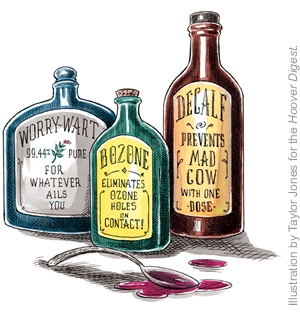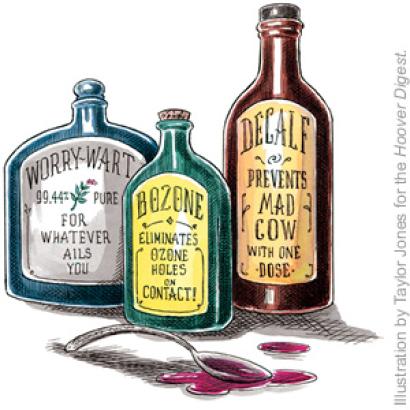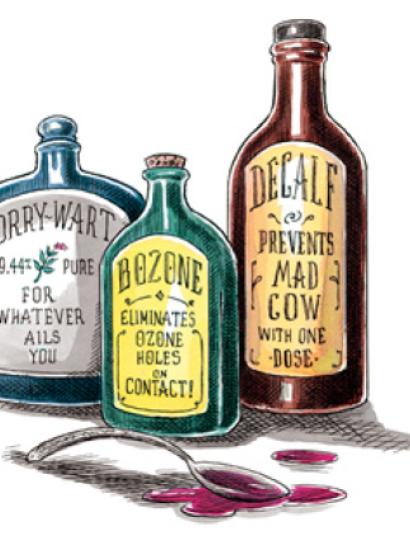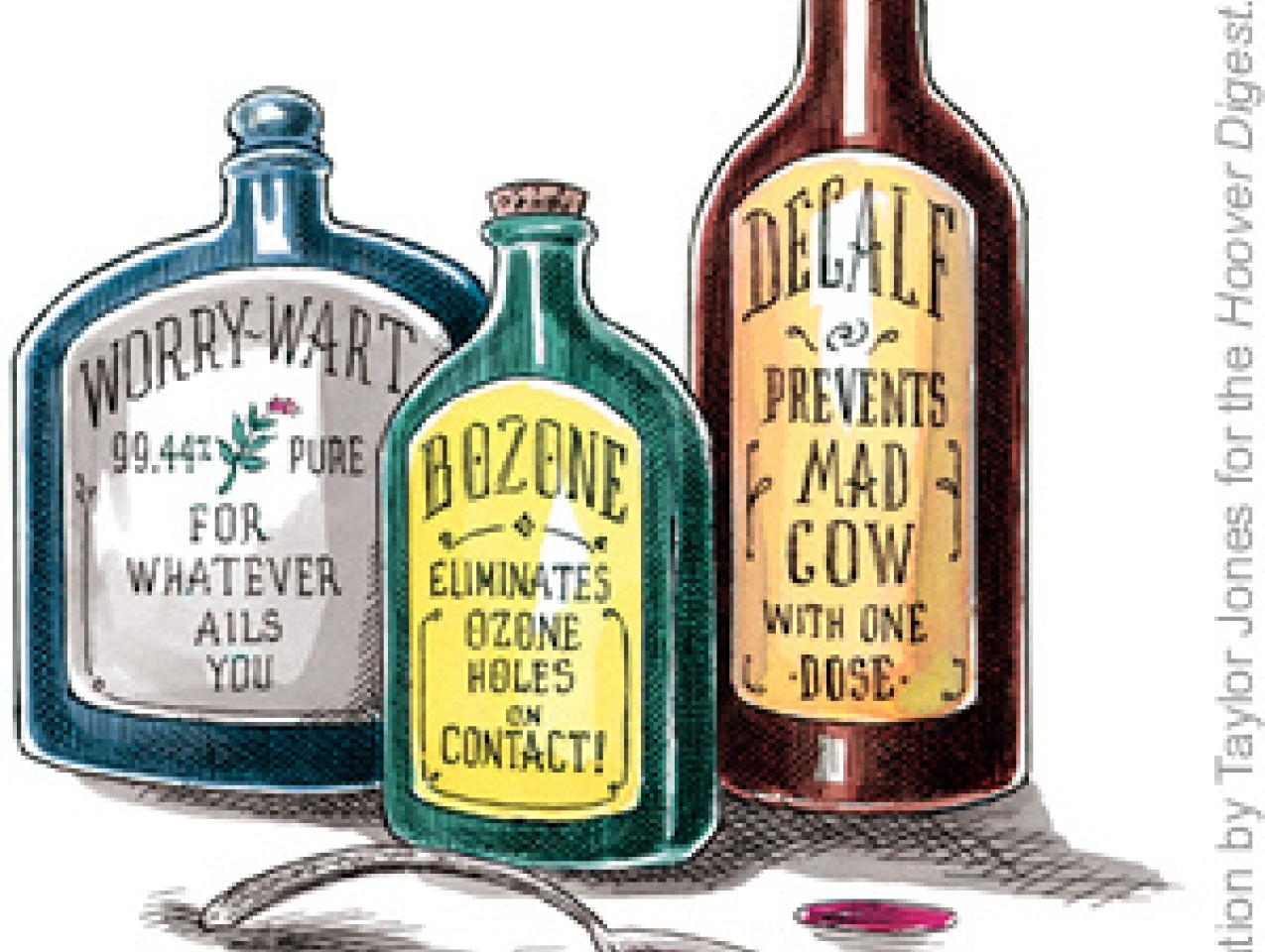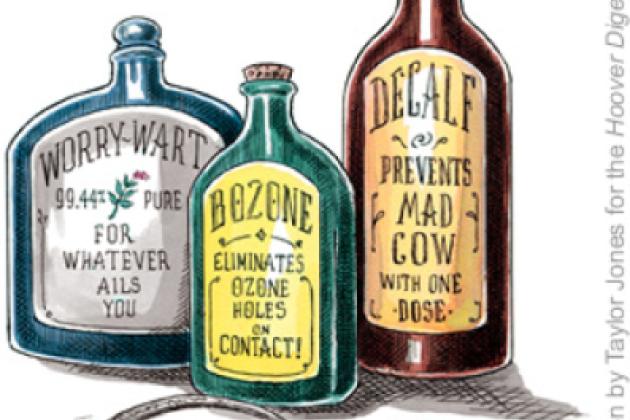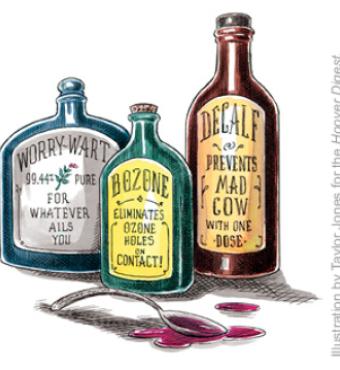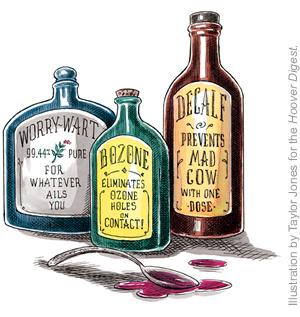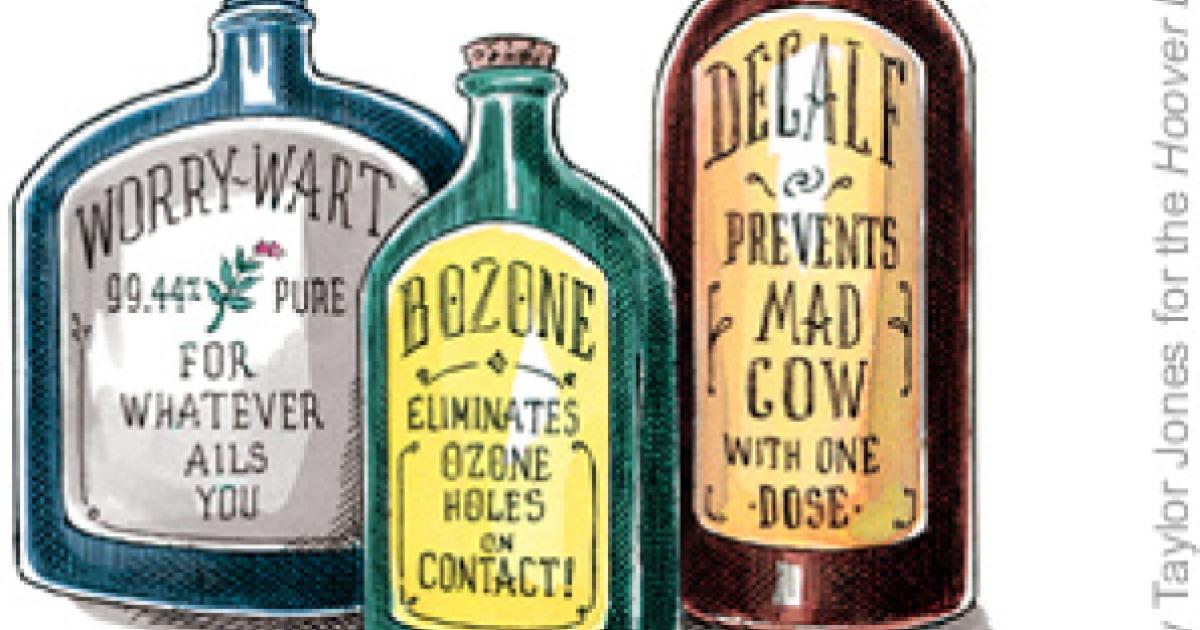- Science & Technology
- Health Care
- Energy & Environment
In a landmark 1953 speech, chemistry Nobel laureate Irving Langmuir told of his visit to the laboratory of J. B. Rhine at Duke University, where Rhine was claiming that results from his ESP experiments could not be predicted by chance and ascribing them to psychic phenomena. Langmuir discovered that Rhine was only selectively counting the data in his experiments, omitting the scores of those he believed were guessing in order to humiliate him. The evidence? Rhine felt that some of the scores were too low to have occurred by chance and that it would, therefore, actually be misleading to include them.
Langmuir dubbed this deviation from the principles of the scientific method “pathological science,” the “science of things that aren’t so.”
Variations on this sort of chicanery are increasingly common among certain self-styled public interest groups, who are less devoted to fudging data to get the right answer than to grossly misrepresenting the results in order to achieve some hidden agenda. Most often, that agenda is not protection of public health or the environment but intractable opposition to, and obstruction of, whatever research, product, or technology the activists happen to dislike. Often, the targets of activists’ opprobrium are socially beneficial and highly cost-effective products or processes.
Activists often try to stigmatize whatever they dislike via guilt by association with greedy or irresponsible “corporate interests.” But for several reasons, including the importance of corporate branding, avoidance of liability, and a desire to succeed in the marketplace, industrial research most often adheres to high professional and legal standards, including peer review. When it doesn’t, the scientific method and market forces collaborate to ensure that, ultimately, dishonesty and deceitfulness are exposed and punished.
By contrast, activist-funded “research” is commonly held to a far lower standard. The activists’ claims are invariably promoted by alarmist press releases and reported by the media, but seldom are they independently peer-reviewed or published in scientific journals. Sadly, policymakers, the media, and the public come to accept this pathological science as credible, especially after it is repeated again and again.
Examples have become more frequent as special interests promote health scares as a way to support litigation. The distortion of science has given rise to flawed policies and regulations, interference with research that offers potential benefits to society, increased public health risks, unwarranted scares, frivolous lawsuits, and higher costs of R&D.
Some examples follow:
• In 1998, British researchers published a study that suggested an association—but not causation—between the administration of measles-mumps-rubella vaccine and an increased risk of autism.
That prompted speculation that the culprit might be thimerosal, an ethylmercury-containing preservative in the vaccine. Despite the fact that the initial study was based on only 12 children, its results were widely publicized, causing some parents and hospitals to stop or delay vaccinations for newborns and children. Subsequent studies of much larger groups of children have not confirmed such an association, however; and the overwhelming consensus among scientists and physicians is that no such link exists.
Nevertheless, this incident inflicted incalculable damage on the public’s confidence in vaccination and on individual children deprived of protection from life-threatening diseases.
• Food irradiation—a process in which foods are treated with ionizing radiation—applied commercially was an historic breakthrough in food processing. First and foremost, it makes our food both safer and cheaper, by delaying the spoilage of highly perishable fresh fish and shellfish and greatly reducing the numbers of microorganisms in spices and of bacteria and parasites in meats and poultry. It also prevents potatoes and onions from sprouting and extends the shelf life of fruits such as strawberries.
Although more than 50 years of scientific research have established that food irradiation has little or no effect on flavor and that it is safe and highly effective, the FDA’s gradual approval of new applications of irradiation has been opposed at every turn by anti-nuclear activists. Contrary to their claims, irradiated foods contain no by-products unique to the process and the process is hazardous neither to workers nor to the environs of treatment plants.
In the realm of food processing, irradiation—the most extensively studied food technology in history—is, along with pasteurization, the closest thing we have to a “free lunch.”
• The supposed hazards of electromagnetic radiation—which is emitted from a variety of sources including overhead power lines, electric blankets, computer terminals, and electric razors—has excited the imagination of many. For example, after a Florida woman developed a brain tumor behind her right ear—where she had usually placed her cell phone—her husband blamed her illness (and subsequent death) on radiation from the cell phone and filed suit against the phone’s manufacturer. After the husband’s 1993 appearance on CNN’s Larry King Show, other, similar lawsuits followed. None was successful, and within several months the scare was forgotten.
This kind of health scare is an example of the post hoc, ergo propter hoc fallacy (believing that because two events are temporally related, they must be causally related). Fallacy it might be, but it lends itself well to the way that Americans these days often learn about safety and risk: “Could your cell phone give you cancer? Details at 11!” In fact, at the current rate of occurrence of brain cancers, about 3,600 cases would be expected to occur among 60 million owners of cell phones, whether or not they use them.
• In 2003, something called the Environmental Working Group (EWG) claimed to have evidence that the farm-raised salmon eaten regularly by millions of Americans contain high levels of PCBs. PCBs commonly were identified in the press coverage as a “toxin,” “probable human carcinogen,” or “cause of cancer and nervous system damage.”
These reports were grossly misleading. At levels of environmental exposure, PCBs have not been shown to cause cancer or any other disease in humans. The “study,” which was based on a sample of only 10 fish, was condemned by experts at a variety of institutions, including the Harvard School of Public Health, the U.S. Food and Drug Administration, and the highly respected American Council on Science and Health. Unfortunately, the criticisms came only after EWG’s report had generated national media coverage; the criticism received little attention from the media.
On its website, the EWG makes no pretense about possessing scientific credentials or expertise, and its president once admitted to a journalist that there was not a single physician or scientist on its staff.
• In 1980, a Canadian newspaper reported that four women in the classified ad department of another newspaper had given birth to children with birth defects, including a cleft palate, underdeveloped eye, clubfoot, and heart problems. The fact that all the women had worked with video display terminals (VDTs) during the early stages of their pregnancies gave rise to speculation that radiation from such terminals—most of which are based on common television technology—was responsible.
Other such “clusters” of birth defects came to light, leading to aggressive anti-VDT activism that in both North America and Europe caused management to be pitted against workers. In Canada and Sweden, merely the belief that harm could be caused by VDTs was considered to be grounds for refusal to use them.
Over the next two decades, several large studies and repeated analyses concluded that the use of VDTs is not associated with birth defects or spontaneous abortions. The Centers for Disease Control and Prevention concluded that the clusters were random occurrences—that is, the function of probability. (If you flip a coin a million times, you’ll likely come close to half a million heads and half a million tails, but along the way, there will be occasional long runs—or clusters—of heads or tails.)
• Environmental activists lately have taken to claiming that conventional crops have been “contaminated” by the finding of minuscule amounts of DNA from “genetically modified”—by which they mean gene-spliced—varieties. Their methodology is flawed, but even if the claims were accurate, they should elicit from the public nothing more than a collective yawn. Genetic modification is not new. Virtually all of the 200 major crops in the United States have been genetically improved, or modified, in some way. Plant breeders—not “nature”—gave us seedless grapes and watermelons, the tangelo (a tangerine-grapefruit hybrid), the “canola” variety of rapeseed, and fungus-resistant strawberries. In North American and European diets, only fish and wild game, berries and mushrooms may be said not to have been genetically engineered in some fashion.
North Americans have consumed more than a trillion servings of foods that contain gene-spliced ingredients, with not a single untoward reaction. In fact, when conventional and gene-spliced seed materials are mixed, arguably the former should be thought of as contaminating the latter.
What makes false alarms hard to expose is the virtual impossibility of demonstrating the absolute safety of any activity or product: There is always the possibility that we haven’t yet gotten to the nth hypothetical risk or to the nth dose or the nth year of exposure, when the risk will finally be demonstrated. It is logically impossible to prove a negative, and all activities pose some nonzero risk of adverse effects.
Pathological science may confuse not only the public but also policymakers, who may themselves be scientifically challenged. Donald Kennedy, president emeritus of Stanford University and former FDA commissioner, chides bureaucrats: “Frequently decision-makers give up the difficult task of finding out where the weight of scientific opinion lies, and instead attach equal value to each side in an effort to approximate fairness. In this way extraordinary opinions . . . are promoted to a form of respectability that approaches equal status.”
This kind of undeserved moral equivalence frequently compromises governmental decision making and has given rise to unscientific and inconsistent regulation of pesticides, biotechnology applied to agriculture, silicone breast implants, herbal dietary supplements, and innumerable other products and technologies.
No one should mistake activists’ misdemeanors for naive exuberance or excessive zeal in a good cause. Their motives are self-serving and their tactics callous—an ongoing example of the sentiments expressed by Linus Van Pelt in the Peanuts comic strip: “I love humanity; it’s people I can’t stand.”
People who understand these issues need to do a better job of educating the large segment of the public that is uninformed—not only about the science but also about the sophistry of those who would abuse it.
